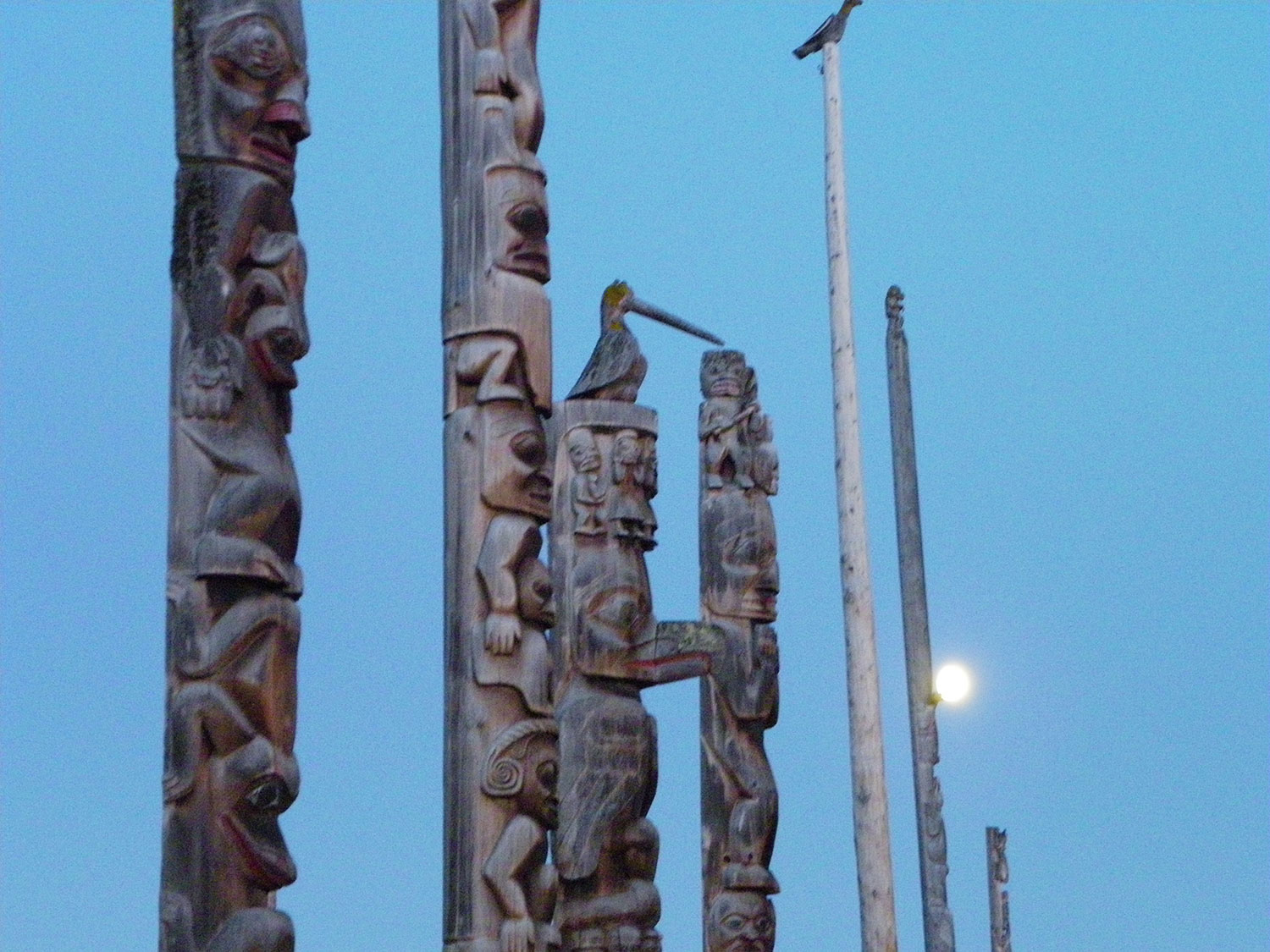Gitanyow is a community nestled along the Kitwanga River in Northwestern BC. They are represented by the Gitanyow Hereditary Chiefs to establish modern treaties and implement First Nations conservation practices and land use planning for their territory.
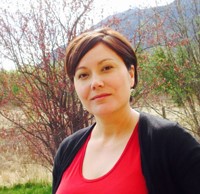
We interviewed Wilp Sustainability Director for the Gitanyow Hereditary Chiefs Tara Marsden from Wilp (House) Gamlakyeltxw. Tara shares her thoughts on the Gitanyow model of long-term conservation planning, the significance of observing and adopting First Nations values and methods in conservation, and the importance of flexible, multi-year granting.
Can you share a bit about how you began your work with Gitanyow?
My work with the Gitanyow Hereditary Chiefs Office began in a volunteer capacity. As a Gitanyow Wilp member, I have always wanted to work for my own nation and bring the skills, education, and experience I have acquired back to our community. My initial volunteer work was to conduct a Wilp-based socio-cultural needs assessment for Gitanyow’s review of the Northwest Transmission Line. The concept for the needs assessment was driven by our Hereditary Chiefs’ desire to see us conducting our own census-type of study, using our own indicators for social and cultural well-being. I brought my experience in community-based research on environmental contaminants and food security to this project, and the end result was a precedent-setting study design, format, and methods which we now use in the assessment of any major project within the territory.
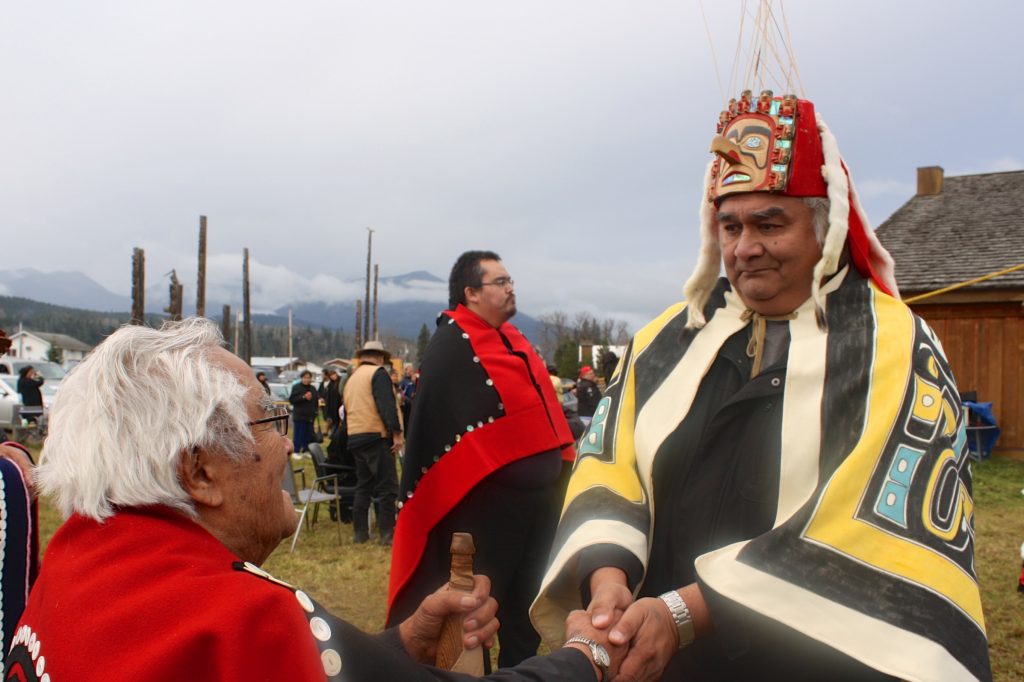
What is your role with Gitanyow?
My current role is Wilp Sustainability Director for the Gitanyow Hereditary Chiefs Office. Wilp Sustainability is a central concept in our traditional laws (Ayookxw), as well as in our government-to-government agreements and relations with the provincial and federal governments. Wilp Sustainability refers to the conditions under which our ecosystems are functioning and healthy, within each Wilp territory. Thereby ensuring that each Wilp is able to provide for current and future generations of its members drawing on the health and wealth of the territory. It is the Hereditary Chief’s responsibility to ensure Wilp Sustainability, and my role is to support their efforts to do so. We do this primarily through the implementation and enforcement of the Gitanyow Lax’yip Land Use Plan, also referred to as our Wilp Sustainability Plan.

A lot of my day-to-day work involves receiving, reviewing, and making recommendations regarding any applications for proposed development activity within the territory using the Land Use Plan as the primary lens.
The Gitanyow Lax’yip Land Use Plan took over ten years of negotiation and drafting, in addition to three court cases brought forward by Gitanyow regarding forestry development and consultation. It is my responsibility to ensure the Plan is followed for any and all development within the territory.
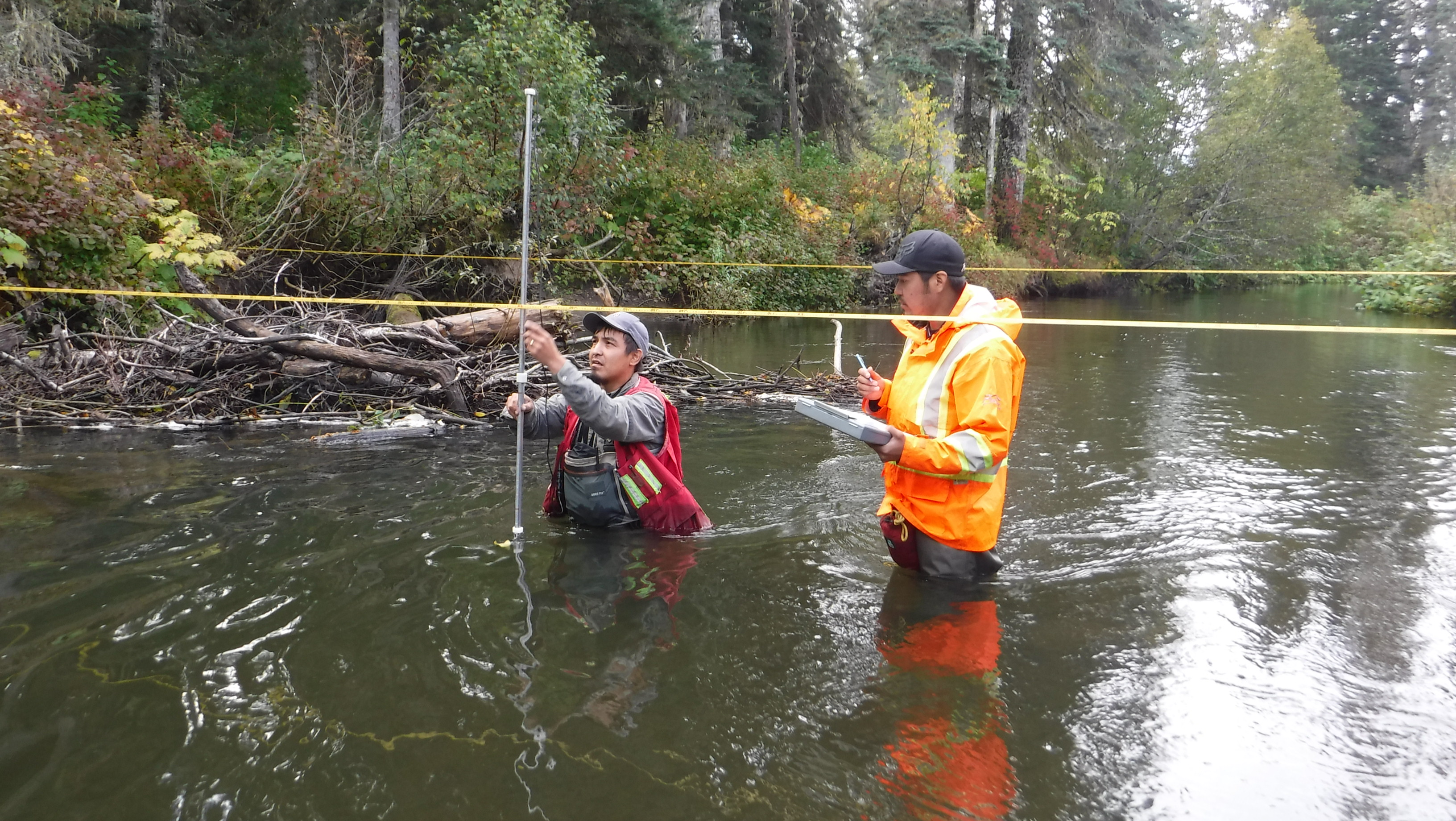
What is a key conservation project Gitanyow is working on now and what is its anticipated impact?
With the Land Use Plan currently in place, a lot of our efforts are now turned to monitoring the plan’s implementation, as well as monitoring the status of key values included in the plan such as water quality and quantity, moose population, and cultural heritage sites and resources.
The Gitanyow Lax’yip Stewardship Guardians are the “eyes and ears” on the territory and are currently involved in environmental monitoring for the Gitanyow Hereditary Chiefs. This project began with seasonal monitoring of moose hunting within Gitanyow territory, and has now grown to a year-round environmental monitoring program. Our Guardians will soon be commencing water quality and quantity monitoring in areas potentially affected by mining in the Nass Watershed. It is critical that we have our own independent and reliable baseline data to inform decisions on potential mining activity. The Lax’yip Guardians are the field technicians gathering this baseline data, and our fisheries biologists, Chiefs, and consulting hydrologists will assess and analyze the data as a part of our Water Quantity and Quality Planning process.
This pilot project has been a great example of collaboration with the provincial government with support through Tides Canada. With the success of the Guardians program-still in its first year-we are also now attracting support from the federal government. What started as a vision from our Chiefs, has grown and built upon each success incrementally.
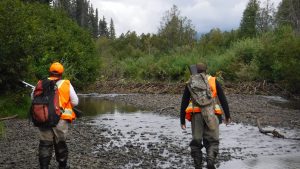 Can you share any lessons learned specific to your conservation project?
Can you share any lessons learned specific to your conservation project?
As a First Nation, it is always difficult to both respond to government and proponent requests for consultation, as well as design and implement our own programs and policies. Being in a constant state of reactiveness is challenging to set time and space aside to plan how to implement our own vision of sustainability. However, doing so is crucial to not only achieving sustainability but to protection of our constitutional aboriginal rights and title.
Further, having a plan or policy in place for government and industry is the most effective way to engage in consultation because it provides a systematic and predictable process, based on agreed upon values and management direction. It is also about ensuring the spirit and intent of our traditional laws are followed, and given life in new and contemporary ways.
Is there a conservation project you are most proud of in your work with Gitanyow?
The Gitanyow court case seeking a declaration of aboriginal title may not sound like a conservation project, but how Gitanyow is approaching title is completely in line with conservation and our vision of sustainability. We launched our title case in April 2016 and have since been busy working on commission evidence, expert reports, and the pleadings phase of the case.
What is interesting and important about aboriginal title lands in Canada is that they are the only status of lands that can only be used in ways that ensure that future generations can enjoy them and exercise their aboriginal rights in the same way we do today or in previous generations. The courts have said clearly in the cases on aboriginal title that aboriginal title lands are there for future generations and are held in a collective manner.
While Gitanyow has been fairly effective in achieving recognition and implementation of our vision of sustainability, there are still powerful economic and political forces which do not prioritize sustainability and aboriginal rights and title. A declaration of aboriginal title will ensure that Gitanyow has the ability, free from the current interference of provincial and federal exaggerated influence, to uphold our traditional laws and truly implement our vision of sustainability.
Conservation projects and campaigns are often very site or project specific. However, the potential precedent setting nature of the Gitanyow title case, not only legally but in terms of how aboriginal people are involved with conservation as First Nation governments, is an exciting prospect. Fundamental changes about how we interact with the land and water, how we develop resources and how we seek to make more informed decisions in Canada, can be led by First Nations. The legal landscape in Canada has shown that many of the groundbreaking conservation campaigns have been led by First Nations, but that without a change in legal title to the land, we still are left to take each fight on case by case in a reactive manner.
Aboriginal title in Canada can help all Canadians move beyond our colonial history and ensure that all future generations inherit a healthy environment.
Why did you decide to work with Tides Canada?
There is a strong need for independent resources, scientific inquiry, and groundbreaking initiatives aimed at environmental, social, and cultural sustainability for First Nations. Financial resources to carry out the work that we need to do are often heavy with political or other ties or strings attached. Companies will offer resources to review their projects, but only if you agree to not object to their project publicly. Governments offer resources for land and resource issues, but the scope and outcomes may be limited by political policy objectives. Tides Canada offers a much-needed service of civil society, a venue centred around common values and objectives that supports grassroots, First Nations, science-based conservation, and informed decision making. There is no political agenda from Tides Canada that we have ever experienced in our work with them for the past five-plus years. It is invaluable to be able to do the work we do with the support of organizations such as Tides Canada.
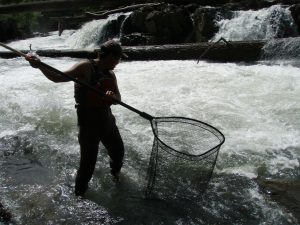 What are the most significant improvements that have resulted from your work with us?
What are the most significant improvements that have resulted from your work with us?
Through the Wilp Sustainability Fund, we have been able to move from concept and vision to action on initiatives that are crucial to Gitanyow. Through the initial endowment grant, we were able to plan our projects year to year and ensure that those environmental values that are at highest risk will always have some level of resourcing. Since the initial year of the Wilp Sustainability Fund, these high-risk values have been the Kitwanga sockeye and the Nass moose population. Both of which have had monitoring and recovering programs funded through the Wilp Sustainability Fund. On-the-ground monitoring, education, and awareness, and gathering critical population enumeration data for both have been made possible because of our work with Tides Canada and generous donors. While we are certainly not in fully recovered state, it is very promising to see that both the Kitwanga sockeye and the Nass moose populations are seeing modest improvements. With continued vigilance in our monitoring, education and awareness, and government-to-government efforts, we are hopeful this positive trend will continue.
Have any partnerships resulted from your conservation work with Tides Canada?
We have been able to work more effectively with our neighbouring nations because of support though Tides Canada. Working across territorial boundaries is critical for watershed-based initiatives, and for species such as moose, grizzly bear, and salmon. Working with Tides Canada has allowed us to partner with our neighbouring First Nations to work on common environmental monitoring initiatives and to seek to establish better processes for the review and assessment of major projects. Moreover, the collaboration with our neighbours has led to greater effectiveness in our partnerships with the provincial and federal governments through the Skeena Sustainability Assessment Forum.
What would you tell someone considering partnering with Tides Canada?
Tides Canada staff have been open and responsive to our ideas around growing the Wilp Sustainability Fund and what opportunities exist to start to contribute some of our own resources, as we endeavor to advance some of our sustainable development initiatives. The endowment model of grantmaking has been extremely effective in allowing Gitanyow to plan in a more long-term manner, to ensure programs are meaningful and lasting, and that we do not have unrealistic expectations for solving all problems by the end of the next fiscal year. Tides Canada’s flexibility in working with donors and First Nations has been instrumental in this regard.
Learn more about the Gitanyow Hereditary Chiefs and their programs here. For over 15 years, Tides Canada has been committed to working with communities on BC’s coast to foster local economies and build capacity for long-term conservation and human well-being. Learn more here.
